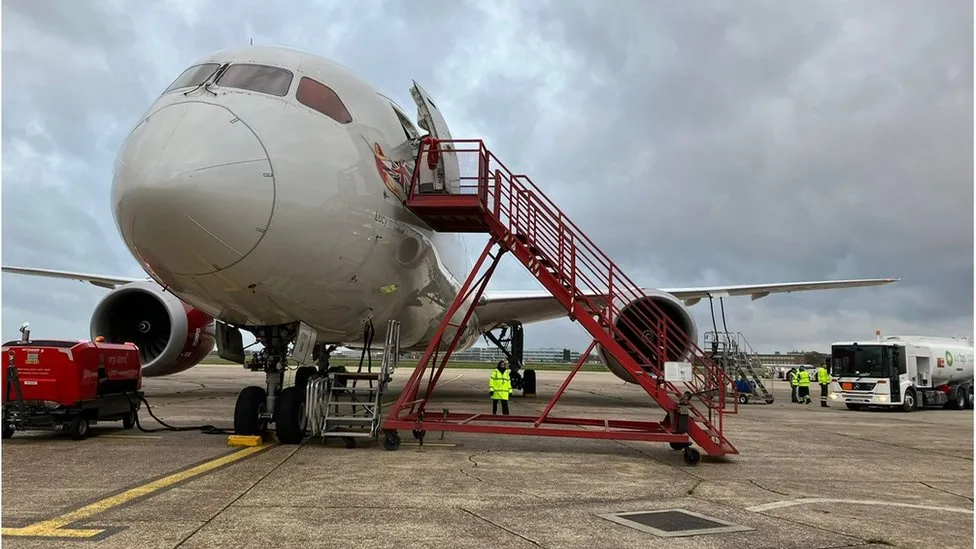First transatlantic flight using 100% green fuels to take off

First transatlantic flight using 100% green fuels to take off from London’s Heathrow to New York’s JFK airport.
Using the flight, which is supported by government funding, airlines demonstrate that greener flying is possible.
Lack of supply remains a problem, and other technology will be required to meet emissions targets.
The so-called sustainable aviation fuel (SAF) can be made from a variety of sources, including crops, household waste, and cooking oils.
The Boeing 787 will be filled with 50 tonnes of SAF for this flight. Currently, there are two types of waste fats, with 88% derived from waste fats and the rest from corn production wastes.
After tests and analysis, the flight was approved earlier this month by UK regulator the Civil Aviation Authority. There have been a number of companies involved in the project, including Rolls-Royce and BP.
Decarbonizing the aviation industry is considered particularly difficult, but airline chiefs see SAF as the best way to achieve zero net emissions.
While SAF still emits carbon dioxide, the industry claims that the “lifecycle emissions” of these fuels are 70% lower.
SAF is already blended with traditional jet fuel in small amounts, but accounts for less than 0.1% of the world’s aviation fuel consumption.
In the current market, relatively few amounts are made, and the cost is higher than kerosene. The maximum amount of blend that an aircraft can use in an engine is usually 50%.
As of now, there are no dedicated commercial SAF plants in the UK, but the government plans to build five by 2025 with grant funding.
It is a significant milestone for airlines when they use 100% SAF for the first long-haul flight. These fuels, however, are not a magic bullet, according to experts. You can’t call these fuels ‘net zeros’ even if you do.”
